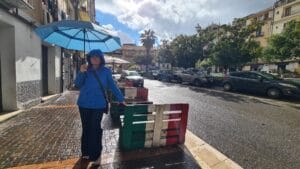
Lamezia Terme: The Blog That Nearly Didn’t Happen – By Andy
A2Z Wander | Our Blog A Rainy Arrival (and a Slight Hangover) Lamezia Terme almost didn’t get its own blog post. There’s only so many

When you think of Tuscany, Florence usually steals the spotlight. But just a short train ride away lies Prato, a town rich in history, art, and culture – and brimming with the kind of authenticity that’s getting harder to find in the more touristy corners of Italy. If you’re looking for a quieter, more laid-back taste of Tuscan life, Prato might just surprise you.

After a few whirlwind days exploring Rapallo, Pisa, and Lucca, Prato offered a much-needed pause – a place to breathe, reflect, and, for me, get some work done.

A ten-minute walk from the train station through the park and alongside the River Bisenzio, we find ourselves in a residential street, no two buildings the same, a mix of grand multi-story town houses, purpose-built flats and some seemingly squeezed in afterthoughts. Halfway down, we find what we’re looking for, a small sign saying we’ve reached Loft Florentia, a sturdy looking gate which pings open to let us inside. We’re greeted by Salvatore, we’re spending three days on the ground floor of his beautiful house, complete with private patio and deckchairs.

We were touched by the generous plate of local goodies: bread, cheese, ham, a bottle of Tuscan wine, some aperitif-type drinks and more. Left to settle in, we immediately relocated outside and ate ravenously. Why does food always taste better when you’re eating outside?
Struck by the generosity of our host, tired from moving day and our recent trips, we happily settle in for the evening, reminding ourselves that sometimes just being is enough. And when you have an apartment like a home from home, it’s time to stop.
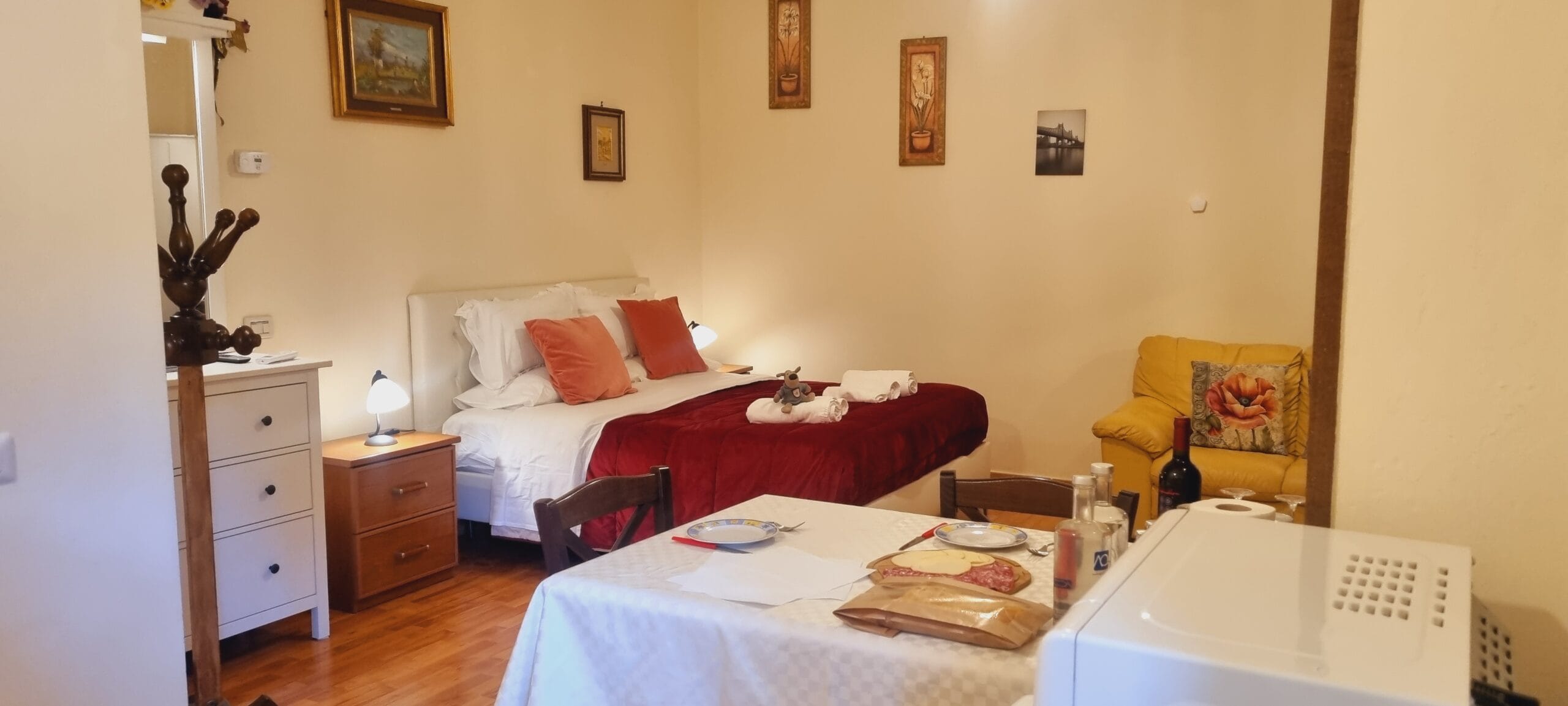
I was working the next day, and so we decided to have a slow morning and then head out to explore the local town in the afternoon. A WhatsApp message alerted us to a fresh thermos of espresso outside our door, along with two of the most gorgeous croissants we’ve ever had. So fresh they were still warm, one pistachio, one chocolate. Wow. and breakfast wasn’t even included! I hastily composed a thank you in my Google-assisted Italian and explained that it was perfect timing as I was working, so we would be at home until late afternoon.
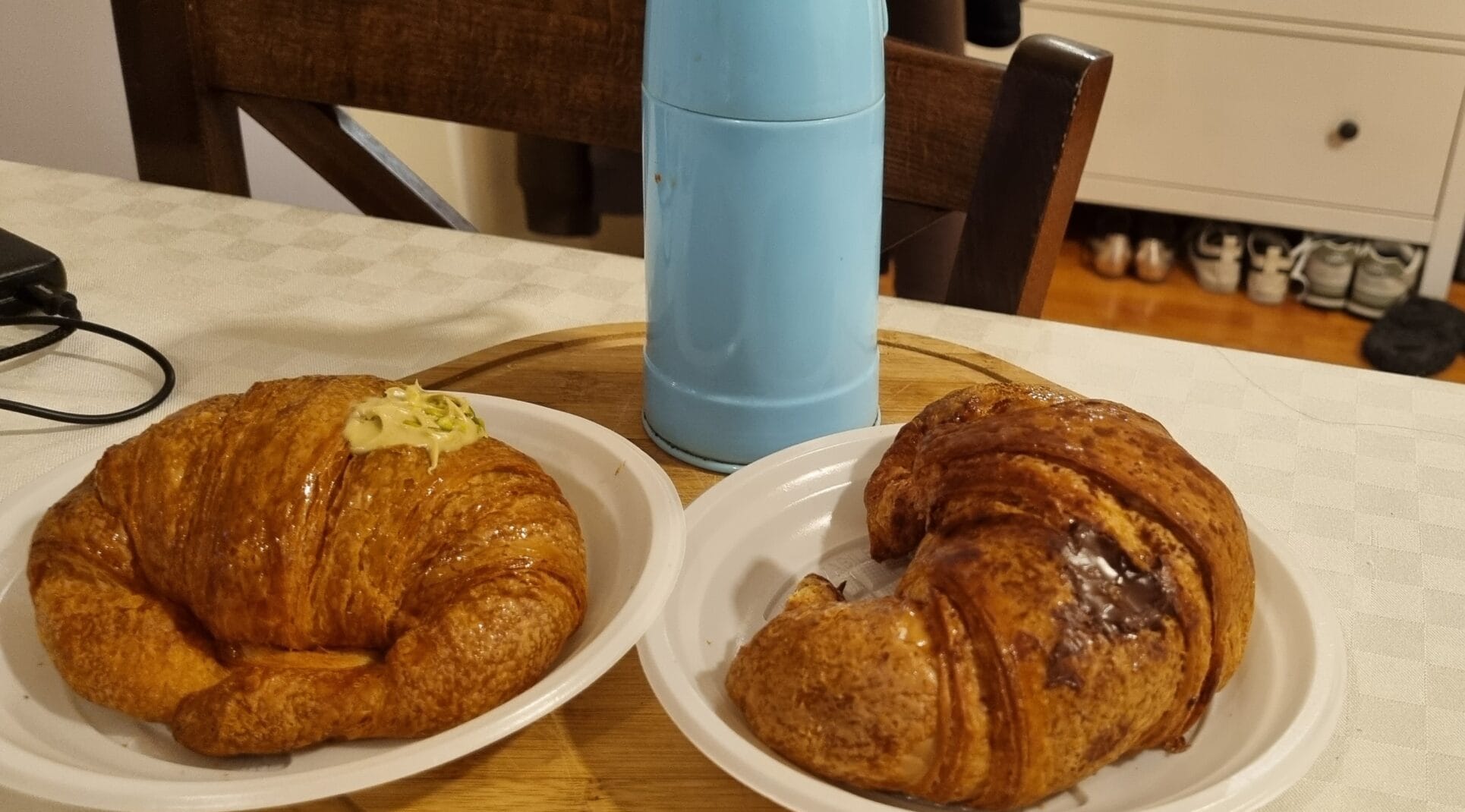
A few hours later, another WhatsApp arrived, ‘as we were home, would we like some lunch?’ Yes, please. A few minutes later, Salvatore arrived with a covered dish of spaghetti with oil and to the untrained eye, what looks like a kind of broccoli but is in fact a Naples speciality. Smelling it before I saw it, I excitedly exclaimed, ‘Is that Friarelli?’ Unused to this recognition, and taking off the lid, he warmly held my hand, and said ‘ Si si. Io sono di Napoli.’

Andy’s nose twitched at the delicious smells escaping the tub. What followed was a delightfully clumsy conversation, where we learned that Salvatore used to be a teacher, and from then on, respectfully insisted on calling me his ‘collega’. I explained that I spent time in Naples and I loved the people and their warmth. Relationship cemented, he left us to enjoy the wonderful food, washed down with a glass of wine, and forever in our memories as only a real human connection can do.

Prato’s historical centre is compact but packed with charm. At its heart stands the impressive Castello dell’Imperatore, a rare example of Swabian architecture in Tuscany. Built for Emperor Frederick II in the 13th century, the fortress still watches over the town – and offers great views, if you’re willing to climb!

Just a short walk from the castle stands the Cathedral of Saint Stephen, or Duomo di Prato—a true architectural gem with its elegant façade and soaring bell tower. One of its most remarkable features is the external pulpit, a playful and innovative work by Donatello and Michelozzo, which wraps around the corner of the building and is considered a standout example of early Renaissance art. Inside, the cathedral continues to impress with stunning frescoes by Filippo Lippi, regarded as some of the most important masterpieces of the period.

One of Prato’s proudest achievements is its textile industry, which dates back centuries. Today, it’s known internationally for its innovative recycling of fabrics and its push towards sustainable fashion. The Museo del Tessuto (Textile Museum) offers a fascinating look at the town’s industrial heritage and ongoing creativity.
Prato’s medieval layout was profoundly shaped by its city walls, first constructed between 1175 and 1196 using alberese stone, complete with towers, bartizans, and drawbridges over a surrounding moat. Initially built in a four-cornered formation with gates positioned near waterways and bridges, the walls evolved as the town expanded.

In the 14th century, a second ring of defences was constructed to protect the growing suburbs, with sections added in stages along the Bisenzio river. Uniquely, the eight city gates divided Prato into eight districts—an unconventional choice compared to other Tuscan towns, which typically had three or four divisions. These gates not only organised urban space but also became the foundation of Prato’s administrative and community identity, now with four divisions, each with its own coat of arms.
While history runs deep here, Prato isn’t stuck in the past. The Centro per l’Arte Contemporanea Luigi Pecci stands as a bold example of the town’s forward-thinking spirit, showcasing contemporary art from Italy and beyond. It’s a striking contrast to the Renaissance buildings, and a sign that Prato embraces both tradition and change.
No visit to Prato is complete without sampling its culinary treasures. Like the town’s signature Cantucci di Prato – almond biscuits that are perfect dipped in a glass of Vin Santo.

 In the historic centre, the Premiata Fabbrica Antonio Mattei is more than a bakery. Since 1858, it’s been handcrafting the town’s famous almond biscuits – the cantucci di Prato – instantly recognisable in their iconic blue packaging. We picked up a box for our lovely host (along with a thank-you card and my very amateur painting of the castle).
In the historic centre, the Premiata Fabbrica Antonio Mattei is more than a bakery. Since 1858, it’s been handcrafting the town’s famous almond biscuits – the cantucci di Prato – instantly recognisable in their iconic blue packaging. We picked up a box for our lovely host (along with a thank-you card and my very amateur painting of the castle).
Tuscan cuisine is based on simple but high-quality ingredients. It’s based around seasonal products, with a focus on zero waste. The slow food movement protects many ingredients such as figs, and restaurants write food miles on menus, there are those that specialise in zero miles.

The town’s multicultural community also adds an unexpected layer to its food scene. With one of the largest Chinese communities in Europe, attracted by the growing opportunities in the textile industry in the 1990s, Prato offers a fascinating blend of Tuscan and Asian influences – from family-run restaurants to fusion street food stalls.
What makes Prato so special isn’t just what you see – it’s how it feels. Unhurried. Welcoming. Real. Whether you’re wandering down quiet cobbled streets, enjoying a coffee in Piazza del Comune, or chatting to local artisans in tucked-away workshops, there’s a gentleness to the pace of life here that’s hard to resist.

Prato is just 25 minutes by train from Florence, making it an ideal base for a day trip – or a quieter base for exploring northern Tuscany. Trains run regularly and are fast, cheap, and efficient – especially if booked in advance. Buying train tickets via the various companies is not as simple as it should be, like many things in Italy, but luckily digital tickets are now widely accepted and almost everything can be booked via the trainline app up to five minutes before departure, which has been useful on many occasions, both pre trip and during our journey.
Andy’s currently working on our blog covering our one-day in Florence, so I’ll leave those details to him. Let’s just say our lovely host had one last surprise up his sleeve – and we got lucky with the trains too!
 Few travellers have heard of Prato, which makes its discovery all the more rewarding. Prato is Tuscany’s second-largest city, with around 200,000 inhabitants. It may not shout the loudest, but that’s all part of its charm. With its quiet beauty, heartfelt hospitality, and rich sense of place, Prato still feels like one of Tuscany’s best-kept secrets – and one that invites you to slow down, stay a while, and truly connect.
Few travellers have heard of Prato, which makes its discovery all the more rewarding. Prato is Tuscany’s second-largest city, with around 200,000 inhabitants. It may not shout the loudest, but that’s all part of its charm. With its quiet beauty, heartfelt hospitality, and rich sense of place, Prato still feels like one of Tuscany’s best-kept secrets – and one that invites you to slow down, stay a while, and truly connect.
Follow us on instagram @a2z.wander

A2Z Wander | Our Blog A Rainy Arrival (and a Slight Hangover) Lamezia Terme almost didn’t get its own blog post. There’s only so many

A2Z Wander | Our Blog A short coastal train ride punctuated by dramatic thunderclaps brought us further down into Calabria to a town called Scilla.
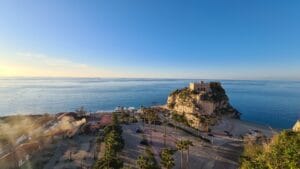
A2Z Wander | Our Blog This is quite the introduction to the town of Tropea… This is the view from Belvedere Piazza del Cannone in

A2Z Wander | Our Blog Three weeks into the trip, and we were finally swapping wheels for waves, boarding our first boat along the coast
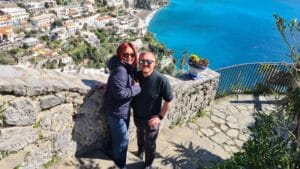
A2Z Wander | Our Blog With Sorrento in our rear-view mirror and the sea glittering to our right, we eased into the Amalfi Coast Drive,

A2Z Wander | Our Blog Naples left its indelible mark on us. We were sad to be leaving with so much still unexplored. But, if